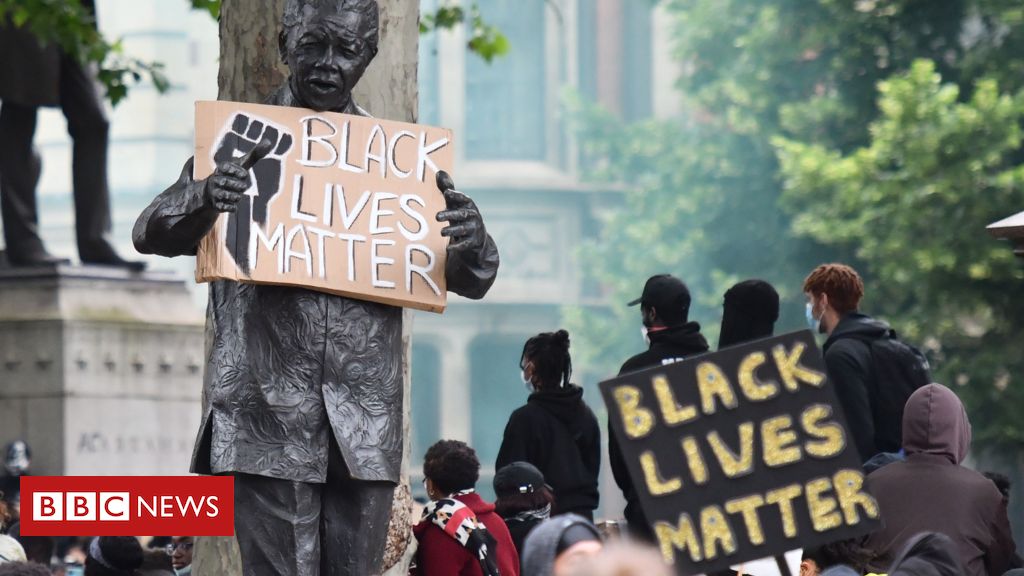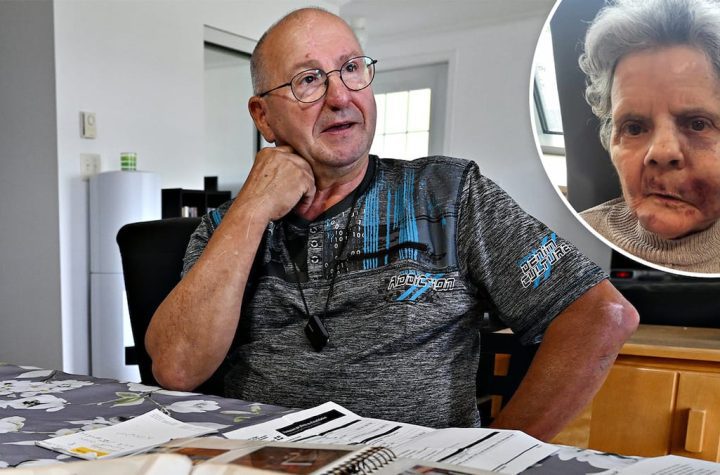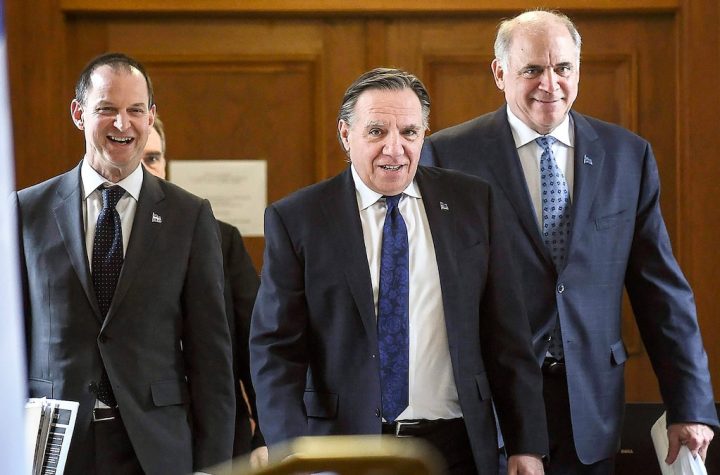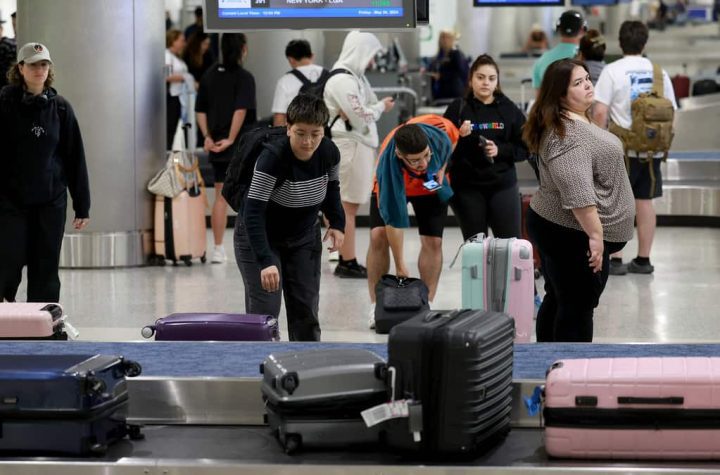
Image copyright
Getty Images
The killing of George Floyd has sparked weeks of protests in the UK and a debate about history and diversity.
Monuments to those involved in the slave trade are being scrutinised, with many calling for them to be removed.
The Mayor of London Sadiq Khan has said that, rather than simply removing statues, new monuments should be erected to commemorate the role minorities have had on British history, including the Windrush Generation and murdered schoolboy Stephen Lawrence.
How many statues are there of black individuals?
The short answer is we don’t exactly know.
Because statues are generally approved at a local level, there is no one central place for listing them.
However, the Public Monuments & Sculpture Association (PMSA) has recorded thousands of statues across England, Wales and Scotland. These are statues or sculptures publicly available (very few are on private estates) and almost all are located outside.
We looked at 968 public statues or sculptures in the database, of which 610 were identifiable as named people.
Of these, just three are of black individuals – two of Nelson Mandela and one of Desmond Tutu (although the latter is placed inside Lewisham Town Hall).
Image copyright
Getty Images
Bust of Nelson Mandela in London is now listed
But while this list gives some insight, it is incomplete. Much of it is based on volunteer work and some newer statues will not have been added to the database.
In the past decade, there appears to have been a more concerted effort to reflect the UK’s current and historical diversity.
Using online news clippings, we found 175 named statues built since 2007 across the UK.
Of these, 21 were of black and minority ethnic (BAME) individuals, including 11 of black individuals. Of these, just six of the statues were of black Britons.
- Crimean War nurse Mary Seacole
- A statue of West Bromwich Albion players Cyrille Regis, Brendon Batson and Laurie Cunningham (the last of whom has another statue at Leyton Orient)
- Olympic medallist Dame Kelly Holmes
- Footballer and soldier Walter Tull, who became the first black officer to lead white British soldiers into battle
- First black professional footballer Arthur Wharton
We also found a few other outdoor, clearly-named statues from before 2007 which are not included in the PMSA list. These include a statue in Bristol of the poet and playwright Alfred Fagon.
Historic England, a charity which manages monuments and buildings, notes that just two of its listed statues are of black individuals – a bust of Nelson Mandela in London’s South Bank and ‘Platforms Piece’ in Brixton. The latter is not included in our analysis, as the statues – created in 1986 and thought to be the first statues of black British people – are not named historical figures.
Taking all of these sources into account, we believe that there are a total of 15 outdoor statues of named black individuals in the UK.
Image copyright
Historic England
Platforms Piece was added to Brixton Station in 1986 and listed in 2016
Avril Nanton runs tours focussing on black history in London. She says she has identified more than 30 statues, busts and carvings representing black people in the city but not all of these are of named individuals.
Those which are include boxer Nicola Adams, musician Jazzie B and Spurs footballer Ledley King, who are captured in walking and cycling charity Sustran’s portrait bench project, but might not be considered traditional statues.
Mrs Nanton notes that in her experience the representation across London varies.
“You know an area like east London which has a lot of Asian, black people, has practically nil representation and an area like Westminster which is basically full of the mainstream people, has a lot of black statues which is interesting,” she says.
Blue plaques
Historic England is also responsible for London’s 950 blue plaques, which identify buildings with connections to notable figures.
It says that less than 4% of the plaques are dedicated to Black and Asian people.
The charity says one of the issues in the past has been a lack of public nominations of ethnic minority figures, although they are working to improve representation. However, they added they are not aware of plaques recognising figures directly involved in the slave trade.
Of Historic Environment Scotland’s 88 plaques, one is dedicated to African-American anti-slavery campaigner Frederick Douglass.
In Northern Ireland, the Ulster History Circle manages a similar scheme, of which one plaque commemorates Dr Ernest Grail Armattoe, a black physician.
Are there more statues of people involved in the slave trade?
Looking at the Historic England and PSMA’s listings of statues and monuments, we identified at least 15 statues of individuals who directly profited from and personally invested in the slave trade, excluding memorials in churches or graveyards.
These include:
- Three of Sir Robert Clayton, a merchant banker who invested in the Royal African Company (RAC), a trading company which shipped African slaves to the Americas.
- Thomas Guy, who invested in the South Seas Company, which attempted to make money from the slave trade.
- Edward Colston, another member of the RAC, whose statue has been removed in Bristol.
- Sir John Cass, also involved with the RAC and slavery who previously lent his name to Cass Business School in London.
- Robert Milligan, merchant and slave owner, whose statue was removed in east London.
- William Beckford, politician and owner of 3,000 slaves.
Again, this is not a complete list, given that the databases are incomplete and some contributions to the slave trade are clearer than others. Many others will have profited from or supported the trade in other ways.
Image copyright
Getty Images
This statue of slave owner Robert Milligan has now been removed
For example, prime minister William Gladstone has at least six statues. He was the son of a slave owner and helped his father secure compensation when the practice was abolished. The great-great-grandson of William Gladstone has said he will not oppose removing a statue of the statesman from the family’s home village.
But while there are statues of individuals who supported slavery, there are also ones of people – often the contemporaries of those profiting from slavery – who vigorously condemned the practice.
In total, we found a large number of statues of individuals who campaigned against the slave trade, including Joseph Priestly and William Wilberforce.
What claims do you want BBC Reality Check to investigate? Get in touch





More Stories
Buy Instagram Followers and Likes: A Detailed Review of InsFollowPro.com
Things to Consider When Going with Sliding Patio for Backyard
Where to Start Automation. Monitor Stands